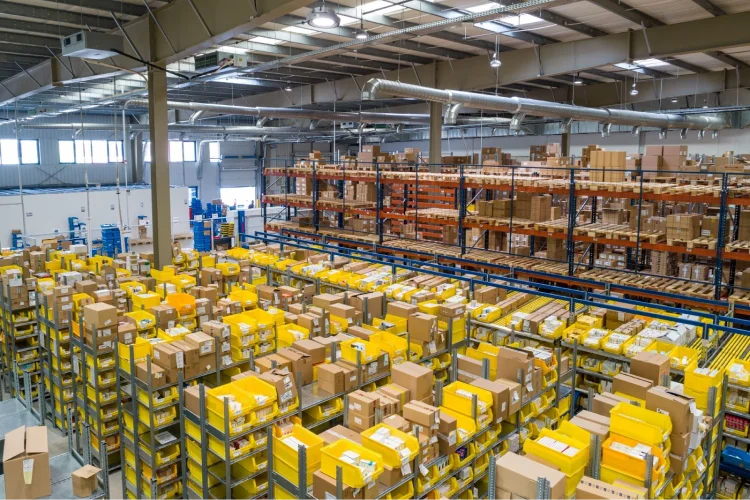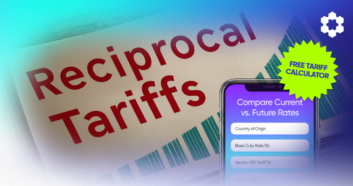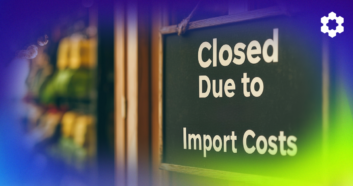Instead of glad tidings this holiday season, Amazon has delivered a naughty little update that it will raise FBA seller fees. On top of the changes to the Amazon reimbursement policy and the holiday fulfillment fees, these new FBA fees will continue to impact sellers’ bottom line.
It is important to note that these new fees will begin to take effect on January 17, 2023 – just days after the holiday fulfillment fee period ends. Further adjustments may be made to plans and predictions for the coming year. Before that, however, we need to understand which fees changed, by how much, and whether there will be more to come.
How Much Will Amazon Raise FBA Seller Fees in 2023?
Instead of just one change to FBA seller fees for 2023, there are many parts and subparts of the fees that have been affected. Amazon released a comprehensive update to these fees, but here is a quick breakdown of the affected areas.
1. The Impact on Referral Fees & Category Fees
Referral fees will remain unchanged, and Amazon will remove fee categories for certain products like collectible coins and other entertainment collectibles.
As a result, impacted ASINs will be re-categorized to their most suitable product category. This might mean different fees for re-categorized products, with Amazon noting that some fees will increase, while others will decrease.
2. Fuel & Inflation Surcharge Fees Changes Are Now Permanent
The Fuel & Inflation Surcharge will be going away… but only because it is now absorbed into the standard FBA fee rate. This initially-temporary surcharge has now become part of the permanent fee.
3. Added Granularity to FBA Fees
There are changes to different aspects of seller fees that Amazon is blanketing under “additional granularity.” In its official release, the company suggested that some sellers used, “more of our storage than we expected or believe was needed,” which now means all sellers must pay the price.
Amazon announced a raft of these granular FBA fee changes, focusing on increased outbound fee rates, a change to weight calculation for apparel and an increase to some peak and off-peak storage fees.
Of particular note among these granular changes is the Storage Utilization Surcharge, as it will be directly charged to cubic sell-through. According to information highlighted by SoStocked, this new surcharge will affect sellers with a storage utilization ratio of 26 weeks and up, with two tiers of costs per cubic feet: one for 26 to 39 weeks, and another for 39+ weeks.
The article goes on to caution that while Amazon predicts this surcharge will only affect 7.5% of sellers, all sellers should be aware of a slowdown in sales, or of overstocking, as these factors will impact Amazon storage costs.
There will also be new Aged Inventory Surcharges for sellers who have high levels of inventory stored in fulfillment centers between 180 to 270 days, and increases on fees for inventory stored between 271 to 365 days (both applicable to all product categories excluding apparel, bags, jewelry, shoes, and watches).
The newly created Aged Inventory Surcharge will start accruing on the 180 day mark and increase every 30 days. The most significant jump in costs happens at the 271 day mark, when they are 2.5 times what it was previously in 2022.

There will also be new surcharges for sellers who have high levels of inventory stored in fulfillment centers, and on inventory stored between 271 to 365 days, and 180 to 270 days (excluding some product categories, like apparel, jewelry and watches).
There will also be an increase to removal and disposal fees (though liquidation fees will stay put), and a welcome reduction to returns processing fees for apparel and shoes.
It should be noted that the rollout for some of these changes will be in January, while others will take place in February and April, respectively. You can see the full list of these granular change announcements on Amazon’s Update to US Referral and FBA Fees.
4. Reduced Fees for the US FBA New Selection Program
There will be reduced fees for the U.S. FBA New Selection program, as well as an increased rebate on sales for eligible new-to-FBA parent ASINs, from 5% to 10% on average.
There will be an additional increase in the number of units eligible, and an extension of the time period of eligibility for certain benefits of the program.
5. Small and Light Program Fee Reduction
Amazon will introduce a reduction in fees by expanding the Small and Light Program and increasing the item price for eligible products from $10-or-less to $12-or-less.
How Will Amazon’s Fee Changes Affect FBA Sellers’ Bottom Line?

There are a few key areas where these new fee increases will affect FBA businesses.
The biggest impact will most likely be felt on storage fees, with increases to some and introductions of others. Reassessing and adjusting stock plans for 2023 will be crucial to helping avoid a painful impact on sellers’ bottom lines.
Although not an immediate threat, the uncertainty of whether more fees will be introduced to replace the Fuel & Inflation Surcharge or the other reduced fees could inspire caution in many sellers.
Back when we talked about the holiday peak fulfillment fee, Bill Jakeway from ZenArbitrage warned to not assume the fee was temporary, and this new announcement proves that to be true.
Will Amazon Continue Raising Seller Fees in 2023 (and Beyond)?
The biggest hint at more fees is with the removal of the Fuel and Inflation Surcharge “at this time.” Given the uncertain future costs of fuel and transportation, it is likely Amazon will bring this back – or another variation of it – to meet other rising costs.
It’s important to remember that this surcharge didn’t go away, it was merely absorbed into the standard fees. This makes it even easier for Amazon to tack on another surcharge when they feel it necessary.
Alongside this potential for a new fee, the unspecified amount of the storage utilization surcharge could indicate that it will be charged on a case-by-case basis. This unknown factor gives Amazon room to charge as they see fit, and will cause concern for those with large quantities of stock in storage.
Lastly, Amazon makes a point of highlighting that its fee increases are still lower than other methods:
“Amazon’s fulfillment fees will remain an average of 30% less expensive than standard-shipping methods offered by other major third-party logistics providers, and an average of 70% less expensive than comparable two-day shipping alternatives.”
This can be read that the ecommerce giant remains competitively priced, but it also shows that Amazon is aware that there is space to increase the fees further and still keep that competitive edge.
How Amazon Sellers Can Protect Their Business from Rising Fees
There are several ways sellers can fortify their businesses against increased fees. Paramount among these is inventory management. Getting a better handle on your inventory and FBA storage will help you mitigate hikes, and keep fees from multiplying.
Consider trying a smarter Amazon inventory management software like SoStocked. It can help your business recover profit, avoid stockouts and overstocking, and forecast accurately. They even have a free Master Carton Calculator tool to help you save thousands on optimizing your packaging and pallets.
Maximizing profits will also prevent your business from suffering from increased fees. ManageByStats helps sellers make profitable decisions in minutes with an integrated, data-powered software suite that will help you manage and scale your business.
Lastly, the recent changes in Amazon’s reimbursement policy means that claiming your reimbursements correctly and accurately is more important than ever. Seller Investigators are experts at auditing accounts and filing claims for the money Amazon owes to sellers. Seller Investigators will focus on recovering the money Amazon owes you while you focus on reinvesting it into your growth engine.
You can find all of these solutions, and many other ways to simplify your success, within the Carbon6 tool suite.
KEEP READING:




